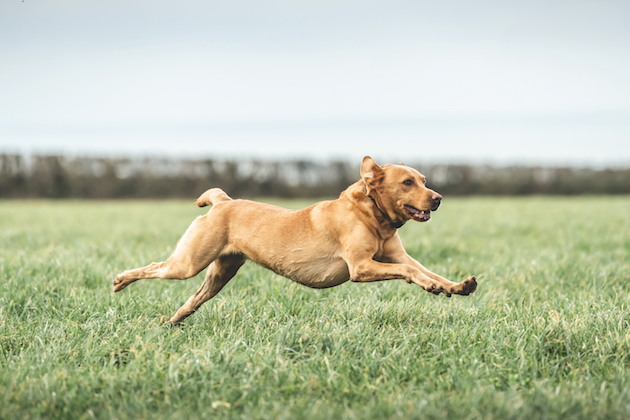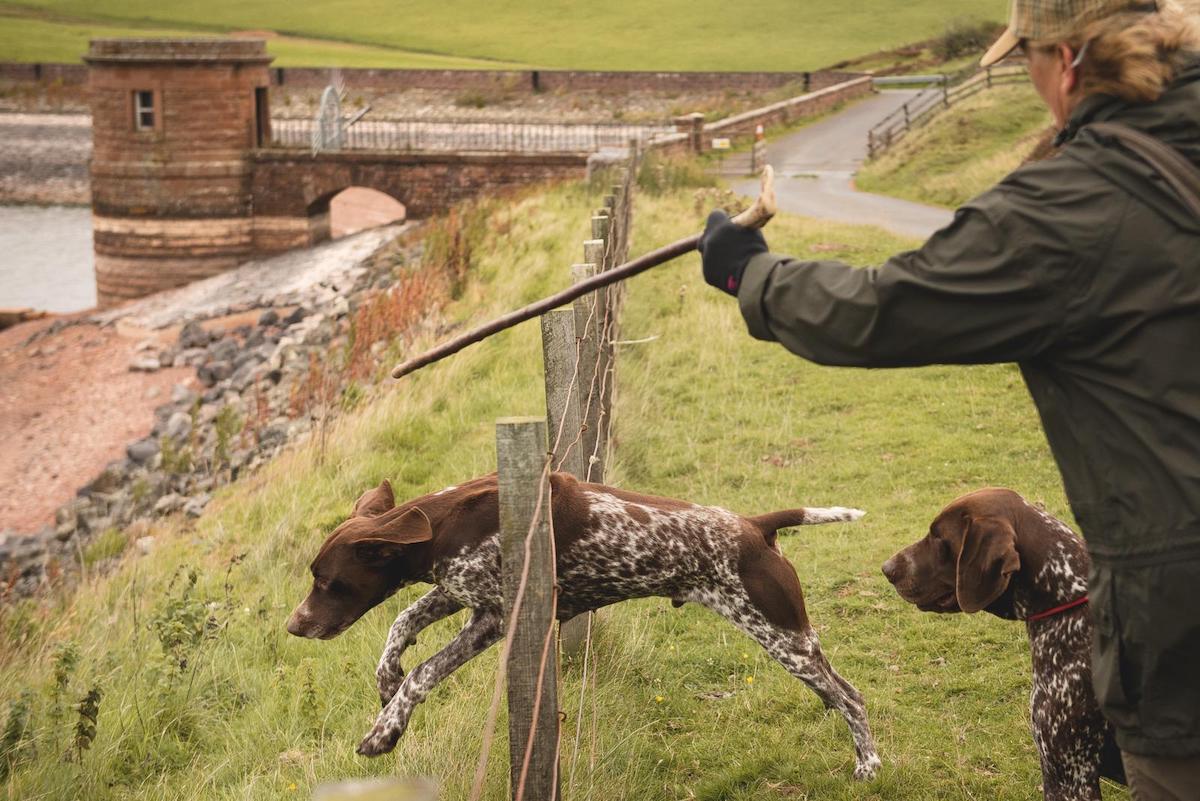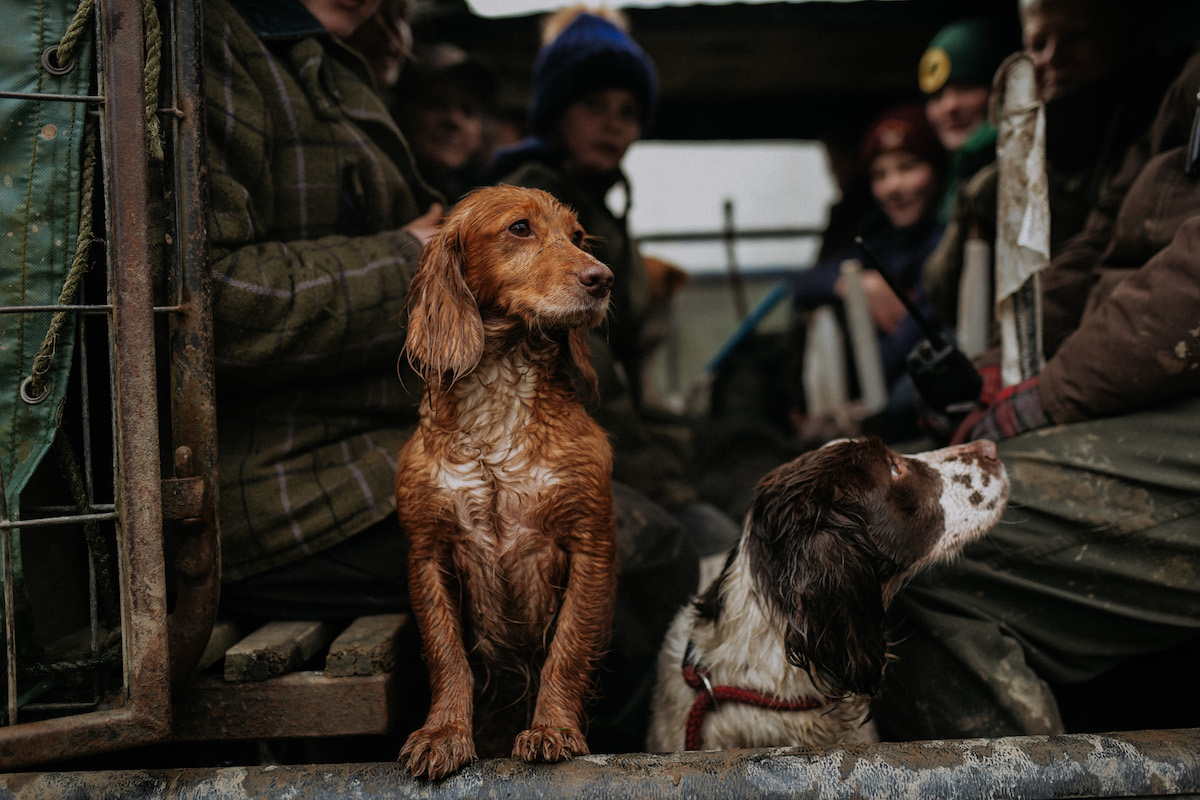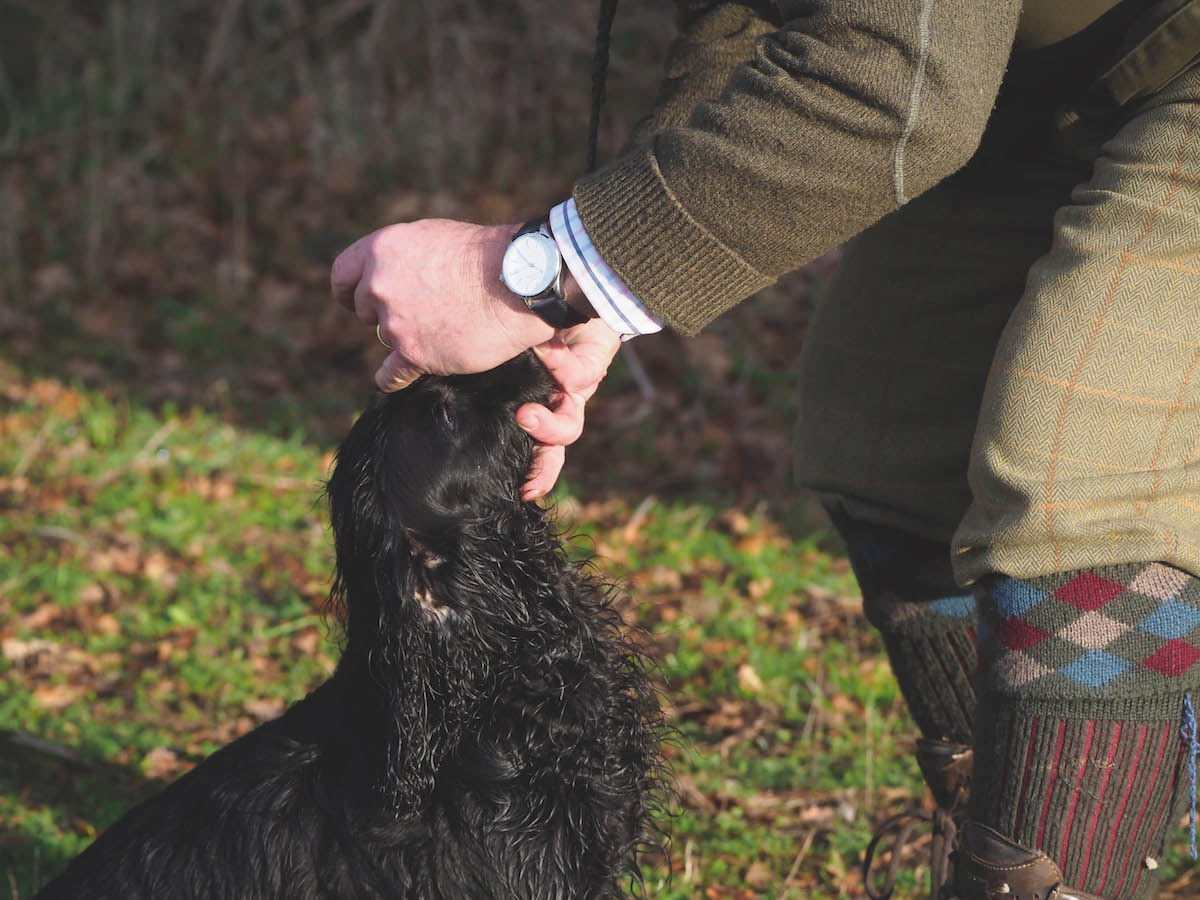When it comes to the crunch
Finding the right diet for your gundog is tricky; do you go gluten-free or dry, or should you try raw only? Ellena Swift looks at the options.

Remember that your dog will need less food in the close season than when it is working
Working dog nutrition is a complex topic. There are many food varieties for a working dog diet out there and all sorts of choices an owner can make for their working dog. When you look into it in depth, even for those embedded in the gundog world, it really is a minefield. Kibble, muesli, wet food, raw complete and raw DIY are just some of the options out there.
Everyone has different opinions and people are often keen to offer advice, whether they are qualified or not. Like every human, each dog is different and what suits one will often not suit another. It is important that owners understand this and, if necessary, feed each of their dogs accordingly.
A working dog diet usually doesn’t need to be as idiosyncratic as in the pet world. For example, purine — found in certain red meats, poultry, game and offal — can cause problems in Dalmatians. Not only do types of food have an effect, but the way it is fed is also essential. All dogs can suffer from bloat, though certain breeds are more susceptible than others. Smaller, more frequent meals are recommended and slowing the dog’s eating down can also help.
Fortunately for most working dog breeds, problems seem to be less of an issue but there is still lots to consider.
Working dog diet – how much work?
First, you must feed your dog the amount that is appropriate for the work it is doing, not for what it could be doing or what you wish you were doing together. Keeping your dog’s weight down when it is resting or out of work is important. This is usually as simple as feeding less, but it might be considering a different food.
Amy Nash, nutritional adviser for Chudleys dog food, explains that working diets tend to contain more fat and protein and a dog with higher metabolism may be fine on it year round. However, with others it may be better to move them back on to a maintenance diet, such as Chudleys Classic, rather than a working feed.
I have many clients who work their dogs perhaps only three or four days a season. They assure me their dog should be on a working diet, but then wonder why their dog is hyper and full of energy. Just because the dog is a working breed, and attends a shoot a few times a season, does not justify the same diet as a dog picking-up four days a week.
Another consideration is to feed the dog according to the weight it should be, not the weight it necessarily is. Guidelines on the back of food packaging are exactly that — guidelines. Judging the amount of food a dog needs is much easier to do by simple observation and understanding the breed. Some breeds are naturally very light and you can often see their ribs, such as greyhounds, lurchers and whippets. This doesn’t always mean they are underweight.
For working gundog breeds such as Labradors, springers, cockers and German shorthaired pointers, you should be able to feel their ribs but not quite see them and they should have a visible abdominal tuck when viewed from the side. In some cases, varying a dog’s diet can be done only when it is doing extra work; you could give it a bowl of Chudleys Working Crunch mixed with some warm water at the end of a long cold day in the field.
The vast majority of dog owners get on very well with kibble. Most dogs can complete a full day’s work on the most basic of diets. But just because they coped it doesn’t mean it was the best option for that particular dog. One of the biggest issues I have found with any dry kibble is not necessarily the quality, but the speed at which the dogs eat it. Labradors tend to inhale their food rather than chew it. Chewing is the first stage of the food being broken down and if it’s missed it can cause issues.

Labradors tend to inhale their food rather than chew it, so try soaking or scatter feeding
Soaking
There are many ways to help slow them down. Slow feeder bowls are good and often scatter-feeding can help. It’s messy but effective and common practice in professional working dog kennels. I have found soaking dry food is good because it doesn’t matter so much if they haven’t chewed it, as it is easier on their stomach to digest.
Feeding a good-quality dry food helps to support the dog’s dental health. In the wild, crunching and gnawing on raw bones and meat helps maintain their teeth. Having a crunchy biscuit can also help keep their teeth clean. It is usually dogs on wet food that struggle with dental problems.
I know of a lot of dog owners who feed a combination of dry food and wet. I have never fully understood this. Generally, the wet is an addition to encourage the dog to eat if it is a fussy eater. In nearly eight years of training other people’s dogs, I have never had a dog not eat when it is here. There is no magic trick — I simply try to find something the dog enjoys. So many times they arrive with food that I wouldn’t wish on a terrier that bit my ankle.
When offered something tastier, the dog willingly gobbles it down. If this is the case, it is clear the dog simply doesn’t enjoy the food it is on and eats purely because it has no choice. I like to see dogs eating willingly and enjoying meal times. Feeding is a great way to bond with a dog and the food can often be used in training situations to help reward. But it won’t work if the dog doesn’t like it.
Wet food can be a valuable addition particularly if your dog needs to increase its water intake. If you look at the information on a packet of wet dog food, it will normally contain about 75% water/moisture. So on wet food they will require less water to help maintain kidney function. However, though it says 75% moisture it doesn’t necessarily mean that it is only 25% nutrients. Muscle meat — the most nutritious type and the main meat content of dog food — is 75% moisture anyway. Vegetables often have a higher water content again.
When a dog food says 75% moisture, it is a reflection of the natural water or moisture content of the total ingredients, and not a statement of water added to bulk it out. Dried food has had the water removed so it has a longer shelf life and requires less in terms of volume to be fed.

Feed the dog according to the weight it should be
Primitive
Despite the obvious fact that dogs have certainly evolved from their wild counterparts, their digestive system remains pretty primitive. Around World War II, dog food began to be mass produced and inexpensive fillers were used to keep costs down and create bulk. Ingredients such as corn, wheat and barley were added, and today some sort of grain can still be seen as one of the main ingredients in many dry foods.
More recently, owners have started to notice that food high in cereal content is less easily digested. Dogs have little natural digestive support for breaking down and metabolising complex carbohydrates and cereal grains. These fibres and grains tend to remain undigested and, over time, damage the lining of the digestive system. The result can be bowel inflammation disorders, food allergies and sensitivities, leaky gut and even obesity. There are many grain-free diets available on the market.
But is grain really the enemy? A lot of people have converted their dogs’ diets based on the assumption that, like human eating trends, gluten-free is best. Over the past 100 years, dogs have adapted very well to having grain in their diets. Many dogs do better on a grain-free diet purely because the quality of the meat is better in comparison with the non-grain-free option. So it is not as much that the absence of grain helped the dog but that the quality of ingredients was better.
In the cheaper, lower-quality foods, it is more the fact that proportions are wrong. Rather than good-quality meat and a small proportion of grain, they contain perhaps 60% grain. Nutritional adviser Amy explained that while some dogs benefit from a grain-free diet in terms of digestive health and nutrient uptake, not all dogs need it. However, it is always a bonus that owners are becoming more cautious with increased knowledge and awareness of their own dog’s individual requirements.
Is food for rewards during gundog training neccessary?
Gundog training: I notice that you often advise the use of food for rewards during training. Shouldn’t a dog be…
What food is best for my gundog puppy?
I’m 15 years old and about to buy a ten week old cocker spaniel bitch. At the moment it is…
DIY diet
The raw food movement is growing and has proved itself in some instances. For someone like me feeding a lot of dogs, feeding raw was problematic purely because the fridge/freezer space required was not practical. Plus, attempting to DIY 10 or more diets was not something I found easy to get my head round. I had always fed a good-quality dry food and never had any problems.
I was then lucky enough to have access to a raw complete food that was being stored on our farm. This gave me a rare opportunity to try raw. I did see a difference in my dogs in terms of maintaining weight, coat quality and, best of all, the amount of waste produced. My German shepherd’s poos could be mistaken for a Chihuahua’s. I have found the cost is higher, however, and there is a risk if you don’t really know what you’re doing.
The bottom line is don’t feed whatever you can get hold of easily and cheaply, or what one person recommends. Do your research, speak to people who know, buy from reputable brands and, every so often, think about whether your approach to nutrition needs to be changed.










